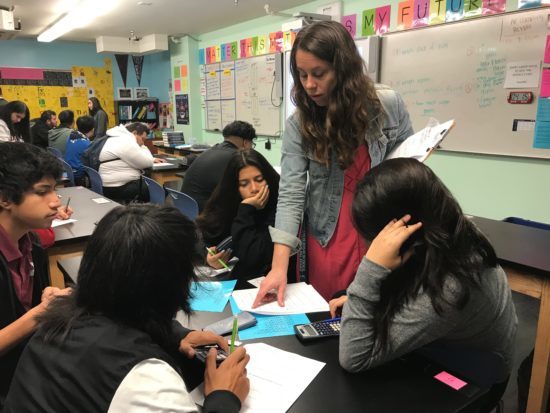In education, there are always new school initiatives and protocols to implement, state standards and exams to prepare for, classroom practices to try, and data points to review. But is there enough time in a school year to truly commit 100% to every new initiative? When working with scholars who are historically below grade level in English and math, the stakes are particularly high. As a teacher, it is in my nature to want to tackle and try everything for the best of my students. But can we make significant change by tackling every possible area of improvement at the same time?
That’s where a school-wide focus comes into play. Two years ago, I embarked on a journey with my school as a member of the Instructional Leadership Team (ILT). Our ILT consists of teacher leaders and administrators whose mission is to develop and implement a school wide focus with the support of the Focused Schools team. In order to make improvement within a school, it is critical to have a targeted focus that the entire school community embodies. A focus isn’t something that you say your school does, it is something that is evident in all aspects of the school community.
Every student, every classroom, every day.
Our first step in this process was identifying the focus, a daunting task when there are a lot of areas of improvement for our scholars. In identifying the focus, it was important for us as an ILT to incorporate the inputs of all staff at our school driving the conversations with student data. In order for our school to live and embody the focus, we needed 100% buy in from all staff. After identifying the area of focus, we created our specific goal that is measurable and attainable for all students. Think SMART-e (specific, measurable, attainable, realistic, timely, for every student).
Next was the implementation of our goal, the how. After teacher buy in, we needed student and parent buy in. Driven by our data we emphasized the importance of our school wide goal by creating a student friendly slogan, posters around the school, and tshirts for students and staff. With students and staff on board it was time for the implementation by slowly introducing evidence-based practices. Our evidence-based practices were carefully selected by going through research and interviewing other schools who were particularly successful in our area of focus. We slowly introduced one practice at a time, and I mean slowly. We did this by first introducing the practice, adapting it for all content areas, conducting model lessons during professional development, and incorporating it in our teacher coaching sessions. The key of our success was the speed at which we rolled out the implementation. Rather than just a checklist to run through, it was a process moving forward when we were reading and sometimes moving backwards if we weren’t.
This process wasn’t easy, and it wasn’t a quick turn around. To make significant change, you need to put in the time, effort, and resources. With a targeted focus, we are able to streamline all of our efforts towards one specific goal. My school is about to embark on our third year and in no means are we “finished” with accomplishing our school-wide goal, but we have definitely made progress.
Chelsea Culbert
Latest posts by Chelsea Culbert (see all)
- Sello Estatal de STEM: Un Nuevo y Emocionante Reconocimiento para Estudiantes en La Preparatoria - October 14, 2019
- State Seal of STEM: An Exciting New Recognition for High School Scholars - October 10, 2019
- 4 Aplicaciones Educativas Que Debe Utilizar En Su Clase - August 29, 2019
- 4 Educational Apps You Should Be Using In Your Classroom - August 28, 2019
- Es Importante Que los Maestros Prioricen las Relaciones Durante las Primeras Semanas de Escuela - August 27, 2019

